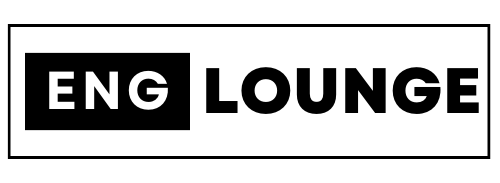Q: Discuss and Apply Norman Fairclough's model of Critical Discourse Analysis?
ABSTRACT
The Critical Discourse Analysis centers itself upon the idea that even a single alphabet, word, phrase, and gesture has a definite background ideology. The CDA describes and evaluates how the discourses construct in our social strata. The three-dimensional model of Fairclough gives us an insight into the underlying principles for critically interpreting the discourse. In our everyday life, we experience different phenomena or discourses without considering the rationale of their production and their impact. The basic idea of jotting down this document is to give you a thorough understanding of the underlying principles of the surface phenomenon by using Norman Fairclough's approach to Critical Discourse Analysis.
Before proceeding towards the practical manifestation of this, it will be a better strategy to get the gist of the theoretical framework of the Fairclough model.
NORMAN FAIRCLOUGH'S MODEL OF CDA:
INTRODUCTION:
Norman Fairclough was credited for the discovery of the Fairclough Three dimensional model. This model is significant as it discusses the underlying principles of CDA.
First, we need to address why this model is labeled as 3D. It is because, it looks at the discourse/language through a three-dimensional cannon, which is very much explicit in the above figure.
HIERARCHY OF LEVELS:
Text………………………………………..Microanalysis
Discourse practice…………………………Broader level
Socio-cultural practice……………………..Broadest
DESCRIPTION OF THREE LEVELS:
- MICROANALYSIS OR DESCRIPTION:
This micro analysis discusses the in-depth analysis rather than tracing of above textual features:
Linguistics tools
Semiotic tools
Literary figures
LINGUISTIC TOOLS:
Such textual analysis concerns itself with the following phenomenon:
- Tracing of the kinds of parts of speech
- Code-switching
- Instances of turn-taking
- Speech error and repair
- Sentence structure
- Grammar
SEMIOTIC TOOLS:
In the next step, we do have to give our perception of the major semiotic tools employed in the text i.e.
- Color patterns
- Font size and shape
- Sign and symbols
2. DISCOURSE PRACTICE OR INTERPRETATION:
In this phase, we interpret the discourse with the help of the consumer/producer relationship. This step will serve the purpose of giving us the rationale for particular discourse.
DISCOURSE PRODUCERS VS. DISCOURSE CONSUMERS:
To better understand, we will elaborate on the above terms with the help of an example. It is a fact that every commodity has some consumers and producers. This relationship has been working since ancient times.
It is obvious when we pay closer attention to our surroundings. Likewise, discourse is also based upon consumption and production.
In the production of TV Serials and Films, we, the audience, are the consumers attracted to a product transferring economic benefits. This step is very significant as it gives us insight into the tracing of the consumer/producer relationship and the effect of the discourse.
3. SOCIO-CULTURAL PRACTICE:
This phase is labeled as an explanatory phase because here, we are concerned about describing the discourses by keeping the socio-cultural, socio-political, and socio-economic contexts. This step is significant as it highlights the above features related to discourse.
- Locating the hidden agenda
- Tracing out the underlying ideologies
- The impact of discourse on the society
PRACTICAL MANIFESTATION:
After building a thorough insight into the tenets of this approach, we will now proceed toward the practical manifestation of this model. For this purpose, we will apply the Norman Fairclough model to Television Advertisements.
For this purpose, I have selected a sticker advertisement of a multinational brand related to shampoo (Pantene) manufacturing.
The foremost step in our analysis is to investigate the use of vocabulary in both advertisements.
In both advertisements, we find an effective use of vocabulary. It is explicit in the use of adjectives 'STRONG' 'NEW' 'POWER COUPLE' 'TO GO LONGER' 'STRONGER HAIR.' All of this vocabulary symbolizes an attraction toward the product. Another significant play of adjectives is inherent in the punch line: 'STRONG IS BEAUTIFUL.' It epitomizes a striking use of vocabulary to catch the audience's attention. The sentence pattern is declarative, focusing on better prospects.
The color patterns are significant in the stickers because the words 'PANTENE' and 'STRONG' are based upon hair color, i.e. Black. This color scheme reveals a hierarchal structure where Pantene makes the hair of the girl strong.
Pantene………….Strong……….Hair
In both advertisements, girls are standing in a very aggressive manner, showing their self–confidence due to strong hair.
The use of golden color is also very important in that it serves as a distinguishing force between two narratives.
Strong hair……………………………..Black
The key to strong hair is Pro-V……………..Golden
Here the graphic designer has keenly interested in selecting the Font size centering on the main product. i.e., Pantene.
The image of measuring tape in one advertisement symbolizes the future increase in hair length.
The punch line "STRONG IS GOING TO ANY LENGTH" and "TO GO LONGER" indicates a very effective use of exaggeration or hyperbole.
The rationale of this advertisement is to attract the audience towards their product to maximize the economic benefits and consumer/producer relationship. The target audience in this regard is the common man, and the manufacturers are the producers with underlying ideology. In CDA, we assume that everything has a meaning that directly or indirectly affects society's socio-economic and socio-political segments. The motive behind the exaggeration in the above advertisements is to gain maximum commercial benefits by injecting a sense of inferiority complex among the audience. This complex is based upon the ideology that strong hairs are the token of respect, honor, and success. This underlying ideology is wrapped in the cover of business and commercialism.
ELIXIR:
Most of the time, it has been observed that these discourses are away from reality. It is very much implicit in the statement of declaring that if you have strong hair, you can gain everything. It seems quite contradictory when you observe many bald people who are very much successful in their individual and social life.







1 Comments
Great info
ReplyDeleteIf you guys have any doubts or queries please let me know.